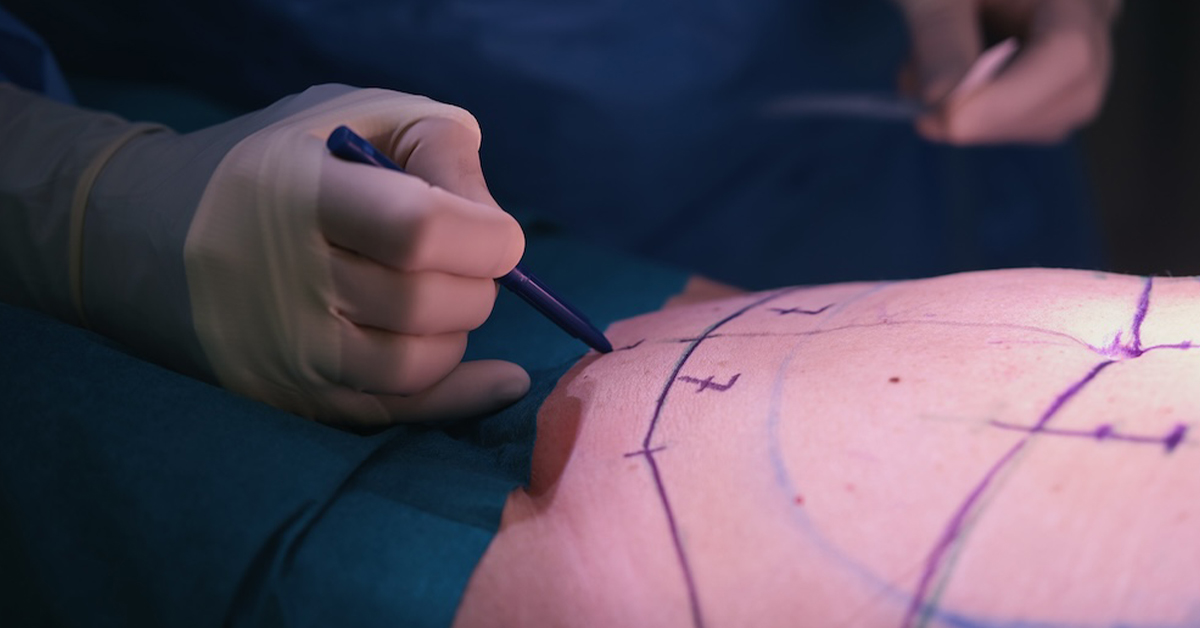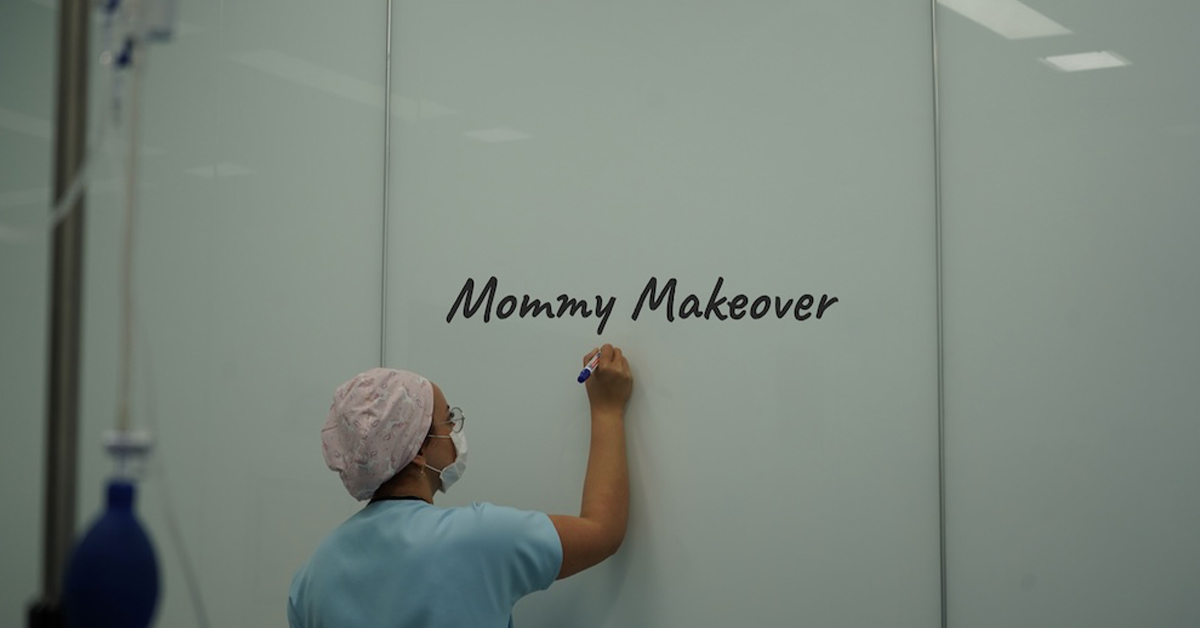Understanding Seroma After Mommy Makeover: Causes & Treatment
Seroma after mommy makeover is a common complication that can occur following tummy tuck surgery. It refers to the buildup of clear-yellow fluid under the skin near the surgical site. The exact cause of seroma formation is not fully understood, but it is believed to be a result of tissue disruption and damage to the lymphatic vessels and blood vessels during the surgery.
While mild cases may resolve on their own, larger or symptomatic seromas may require medical intervention. Treatment options include needle aspirations, sclerotherapy, seroma catheter placement, and surgical excision. In addition to medical treatment, postoperative care instructions such as limiting physical activity, applying warm compresses, keeping the incision clean and dry, and wearing compression garments can help promote seroma healing and prevent recurrence. Risk factors for seroma after mommy makeover include extensive surgery, obesity, low protein intake, and inadequate closure of the surgical incision.
What is Seroma and Why Does It Occur After Mommy Makeover?
A seroma is a fluid collection that forms under the skin near the surgical site following mommy makeover surgery, which can be a potential complication. During the procedure, a pocket is created between the skin and underlying muscles to remove excess fat and tighten the abdominal muscles. However, sometimes fluid accumulates in this space, leading to the formation of a seroma. The fluid in a seroma consists of a combination of blood plasma, lymphatic fluid, and tissue fluid.
The exact cause of seroma formation is not fully understood, but it is believed to be a result of tissue disruption and damage to the lymphatic vessels and blood vessels during the surgery. Seromas are more likely to occur in patients who have undergone extensive surgery, have a higher body mass index (BMI), or have a family history of seromas. Factors such as low protein intake or poor wound healing can also contribute to seroma formation.
“Seroma formation can be a distressing complication after mommy makeover surgery, but understanding its causes can help patients make informed decisions and take steps to minimize their risk.”
Causes of Seroma Formation
- Tissue disruption and damage to lymphatic vessels and blood vessels during surgery
- Extensive surgery
- Higher body mass index (BMI)
- Family history of seromas
- Low protein intake
- Poor wound healing
To better understand the factors contributing to seroma formation, it is important to consider the underlying causes and risk factors associated with the condition. By addressing these factors and taking appropriate preventive measures, patients undergoing mommy makeover surgery can significantly reduce their risk of developing seromas.
| Risk Factors | Causes |
|---|---|
| Extensive surgery | Tissue disruption and damage to lymphatic vessels and blood vessels during surgery |
| Higher body mass index (BMI) | Increased tension on the incision site and impaired wound healing |
| Family history of seromas | Genetic predisposition to fluid accumulation and impaired lymphatic drainage |
| Low protein intake | Impaired wound healing and tissue repair processes |
Recognizing the Symptoms of Seroma After Mommy Makeover
After your mommy makeover surgery, it’s important to be aware of the symptoms that may indicate the presence of a seroma. Recognizing these symptoms early on will allow you to seek prompt medical attention and ensure appropriate treatment. Common signs of seroma include:
- Swelling: Balloon-like swelling in the abdominal area is a common symptom of seroma. This swelling may be noticeable and can sometimes feel tense or firm to the touch.
- Discharge: Clear or yellowish fluid draining from the surgical incision is another potential symptom of a seroma. If you notice any fluid leaking from your incision site, it’s important to consult your healthcare provider.
- Pain: Discomfort or pain near the incision site can be indicative of a seroma. This pain may be localized or radiate throughout the abdomen.
If you experience any of these symptoms within the first few weeks after your mommy makeover surgery, it’s crucial to promptly contact your healthcare provider to discuss your concerns. They will be able to evaluate your condition and provide an accurate diagnosis.
“Early detection of seroma symptoms is vital for effective treatment and prevention of complications.”
Treatment Options for Seroma After Mommy Makeover
When it comes to treating seroma after mommy makeover surgery, there are several options available depending on the severity of the condition. Mild seromas that are small and asymptomatic may resolve on their own without intervention. However, larger or symptomatic seromas often require medical treatment.
One common treatment option for seroma is needle aspiration. This procedure involves using a thin needle to drain the fluid from the seroma. By removing the fluid, the seroma can decrease in size and alleviate any discomfort or pain. Another treatment option is sclerotherapy, where a medication is injected into the seroma cavity to promote its closure and prevent further fluid accumulation.
In some cases, a seroma catheter may be placed to continuously drain the fluid from the seroma. This can be particularly beneficial for larger seromas or those that are slow to heal. Surgical excision is another option for persistent or recurrent seromas that do not respond to other treatments. This procedure involves removing the seroma and any surrounding damaged tissue to promote healing.
| Treatment Options | Description |
|---|---|
| Needle Aspiration | A thin needle is used to drain the fluid from the seroma. |
| Sclerotherapy | A medication is injected into the seroma cavity to promote its closure and prevent further fluid accumulation. |
| Seroma Catheter | A catheter is placed to continuously drain the fluid from the seroma. |
| Surgical Excision | The seroma and any surrounding damaged tissue are surgically removed to promote healing. |
The choice of treatment will depend on the individual patient and the specific characteristics of the seroma. It is important to follow your healthcare provider’s recommendations for post-treatment care to promote healing and prevent complications. This may include keeping the area clean and dry, wearing compression garments, and avoiding strenuous physical activity during the recovery period.
Risk Factors and Causes of Seroma After Mommy Makeover
Seroma formation is a potential complication that can occur after undergoing a mommy makeover procedure. Several risk factors and causes contribute to the development of seroma. Understanding these factors can help patients and healthcare providers identify and mitigate the risks associated with seroma.
Risk Factors
Several factors increase the likelihood of developing seroma after mommy makeover surgery. These include extensive surgical procedures, obesity, and low protein intake. Extensive surgery, particularly when combined with other procedures like liposuction, can disrupt tissues and blood vessels, increasing the risk of fluid accumulation. Obesity and low protein intake can also contribute to tissue disruption and hinder proper healing. Additionally, certain surgical techniques that involve excessive undermining of tissues or inadequate closure of surgical incisions can increase the risk of seroma formation.
Causes
The exact cause of seroma formation is not fully understood, but it is believed to be a result of tissue disruption and damage to lymphatic vessels and blood vessels during surgery. The creation of a pocket between the skin and underlying muscles during a mommy makeover procedure can lead to fluid accumulation in this space, forming a seroma. It is important to note that seromas are more likely to occur in patients who have undergone extensive surgery, have a higher body mass index (BMI), or have a family history of seromas. Factors such as low protein intake and impaired wound healing can also contribute to seroma formation.
By recognizing the risk factors and causes of seroma after mommy makeover surgery, healthcare providers can take appropriate measures to prevent and manage this complication. Patients can also work with their providers to develop personalized strategies for reducing the risk of seroma formation and ensuring optimal postoperative recovery.
Seroma Prevention After Mommy Makeover
Preventing seroma formation is an important aspect of postoperative care after mommy makeover surgery. By following these recommendations, you can reduce the risk of developing a seroma and promote your healing process:
- Wear Compression Garments: Your plastic surgeon may recommend the use of compression garments after surgery. These garments help minimize swelling, support the tissues, and encourage proper healing. By providing gentle pressure to the surgical area, compression garments can help reduce the risk of fluid accumulation.
- Utilize Surgical Drains: In some cases, your surgeon may use surgical drains to facilitate efficient fluid drainage and prevent the formation of seromas. These drains allow excess fluid to be removed from the surgical site, reducing the likelihood of fluid buildup and promoting faster healing.
- Maintain Personal Hygiene: Good personal hygiene is essential to prevent infection and promote proper wound healing. Follow your surgeon’s instructions for cleaning and caring for the surgical incisions. Keep the incision area clean and dry to minimize the risk of complications.
Remember, seroma prevention starts with selecting an experienced plastic surgeon who specializes in mommy makeover procedures. A skilled surgeon will employ techniques that minimize tissue disruption and optimize wound closure, reducing the risk of seroma formation.
By taking these preventive measures and closely following your surgeon’s postoperative instructions, you can significantly reduce the likelihood of seroma formation after mommy makeover surgery. Always consult with your healthcare provider for personalized advice and guidance regarding your specific circumstances.
| Preventive Measures | Benefits |
|---|---|
| Wear Compression Garments | Reduces swelling and supports tissue healing |
| Utilize Surgical Drains | Facilitates efficient fluid drainage and prevents seroma formation |
| Maintain Personal Hygiene | Prevents infection and promotes proper wound healing |
Seroma After Mommy Makeover: The Bottom Line
Seroma is a common complication that can occur after mommy makeover surgery, but the good news is that it is usually not serious. Most seromas are mild and can resolve on their own with time. However, it is important to seek medical care if a seroma forms to ensure proper treatment and prevent potential complications.
Treatment options for seroma after mommy makeover surgery vary depending on the size and severity of the seroma. Your healthcare provider may recommend needle aspirations, sclerotherapy, or surgical excision, among other options. It is essential to follow your provider’s recommendations for post-treatment care to promote healing and prevent recurrence.
In addition to medical treatment, there are steps you can take to aid in your own seroma healing and prevent future complications. Limiting physical activity, applying heat to the affected area, keeping your incision clean, and wearing compression garments as recommended by your surgeon can all contribute to a successful recovery. Remember to follow up with your healthcare providers for proper management and care throughout your healing process.
Schedule a Mommy Makeover Consultation in Miami, FL
To begin your Mommy Makeover journey in Miami, FL, the first step is to schedule a consultation with us. During this consultation, we will discuss your goals, evaluate your individual case, and provide you with a personalized treatment plan.
To learn more or schedule a consultation, please call us at (305) 406-9055 or conveiently book online now.







